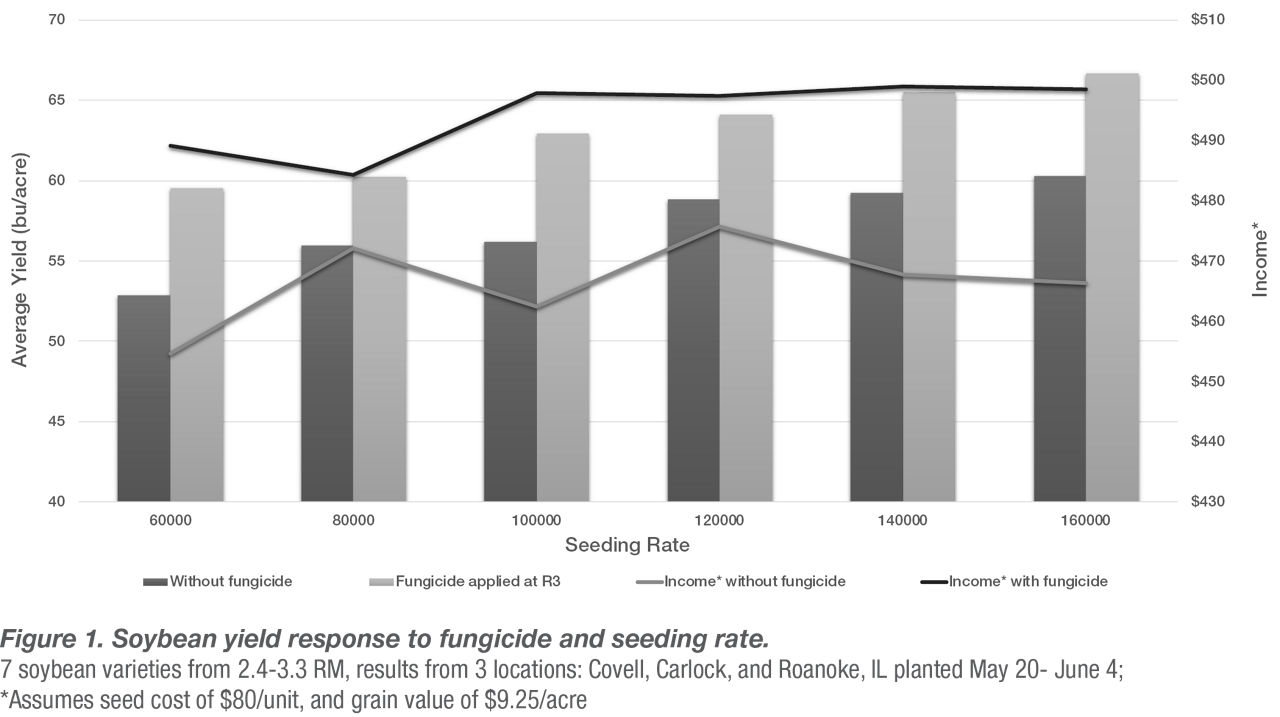3 MIN READ
Soybean Yield Response to Variable Seeding Rates and Fungicide Application
January 28, 2020
TRIAL OBJECTIVE
2019 was a challenging season that forced many growers to plant soybeans substantially later than planned.
Some growers wonder if there is value in applying fungicides to soybeans when weather conditions are not conducive to disease development.
These trials were developed to investigate the value of a fungicide application in late soybean plantings.
RESEARCH SITE DETAILS

The trials were conducted in Illinois at Bayer Crop Science FOCUS sites in Woodford and McLean Counties.
Seven soybean varieties ranging from 3.4 to 3.9 relative maturity (RM) were planted at 3 locations.
Soybean seeding rates ranged from 60,000 to 160,000 seeds/acre in 30-inch rows.
Delaro® 325 SC fungicide was applied at the R3 soybean growth stage despite the lack of visual disease symptoms.
The trial was replicated 4 times at the Roanoke and Covell, IL locations and not replicated at the Carlock, IL site.
The 2019 growing season was very cool and wet through early June, leading to delayed planting for many growers. Hot and dry conditions prevailed in July and August.
UNDERSTANDING THE RESULTS
Without the fungicide application, soybean yields increased with increasing seeding rate with maximum return on investment (ROI) at 120,000 seeds/acre (Figure 1).
When fungicide was applied at R3, maximum ROI was attained at the 140,000 seeds/acre seeding rate but there was very little difference in ROI from 100,000 to 160,000 seeds/acre (Figure 1).
The Delaro® 325 SC fungicide application resulted in higher yields with increasing seeding rates, which could potentially optimize the ROI at higher populations in a more valuable commodity environment.

KEY LEARNINGS
Although there was no identifiable disease pressure, there was a substantial yield response to fungicide application at all soybean seeding rates. This illustrates the benefits of fungicides outside of disease suppression.
High management systems including a fungicide application may be tailored to individual farms. If maximum ROI is the goal, it may be attained with less inputs in the form of lower seeding rates since the ROI was relatively constant from the 100,000 to 160,000 seeds/acre seeding rates. Likewise, if maximum yield is the goal, it may be attained while maintaining profitability.
6010_R2